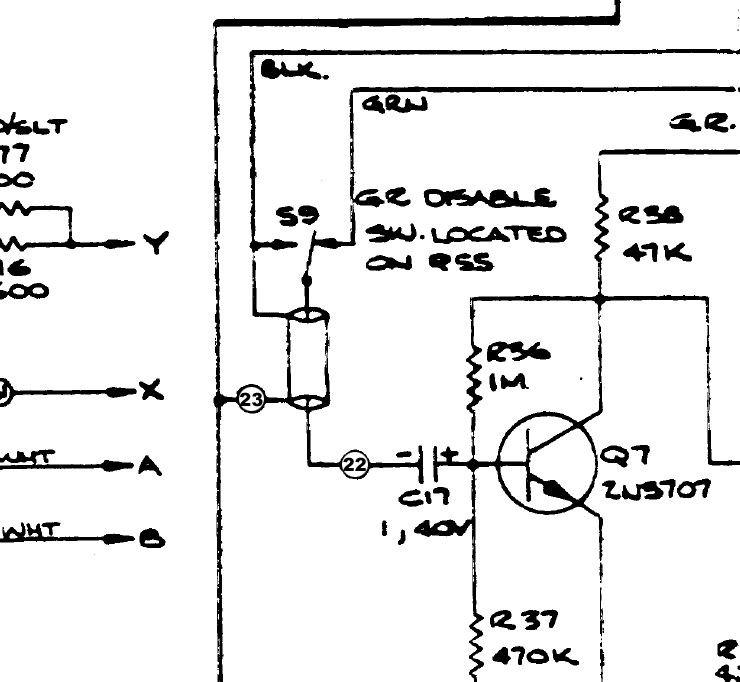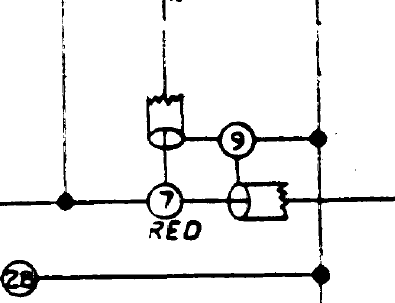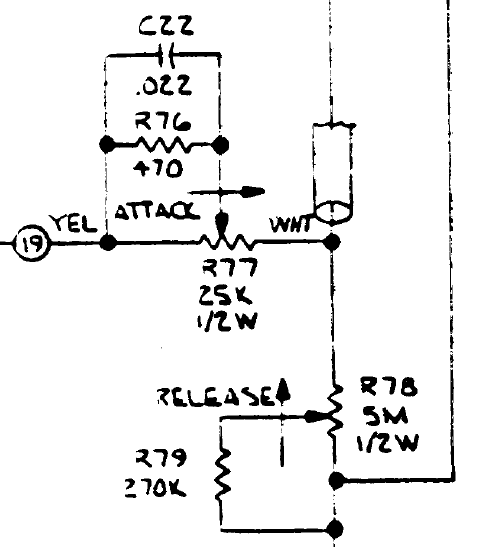Dean Roddey said:
mnats said:
I never mentioned anything about pins.
I meantioned them, the point being that I'm soldering everything in, so I want to be sure before I do it. Once the board is soldered onto the rotary switch it's going to be a lot more of a PITA to change it.
The switch can only go in one way (well, four really, but each way operates identically). Don't worry about soldering it in. I suppose it could also go on the wrong side of the board, but it would be very difficult to get the solder to flow as the pads are only on one side.
[quote author=Dean Roddey][quote author=mnats]If you left either ground connected there would be no path for the input of the gain reduction amplifier to connect to ground via the switch. In certain instances, this might cause interference to inject itself into the gain reduction amplifier causing spurious gain reduction where none is wanted.[/quote]
Which 'either' are you referring to here?[/quote]
My apologies, I meant to write
unconnected. I've corrected my post above.
[quote author=Dean Roddey][quote author=mnats]Armed with the knowledge I attempted to impart previously, look at this part of the schematic which represents the connection of point 7 to the main PCB:[/quote]
Sorry, but I have no idea what the answer is based on what you just said.[/quote]
Sorry, I was trying to 'teach you to fish', but now I see that you are truly sincere in your desire to learn nothing about electronics.
You use a shielded wire here and connect the shield to the ground on the main board only.
[quote author=Dean Roddey]
Given that there's only 1 connection for 7 on the meter board, and that 7 is nowhere near the ground connector on the main board...[/quote]
[quote author=Dean Roddey]
There is a ground connector next to 7, but it's not covered by a Molex connector on my system or any that I've seen pictures of, so I didn't think it got used. Are you saying that the shield on the main board side should go to that non-molex'd ground connector?[/quote]
The board you have does or does not have a ground connection next to pad 7?
If it does not you have a version earlier that v2.2, and you can scrape back a bit of the top ground plane to make the connection.
[quote author=Dean Roddey]And I'm not sure what the relevance of the attack pot is, since 7 is going to the board, not the attack pot. [/quote]
Yes, as I previously stated: "You can attach this wire to the rotary board which in turn connects to the pot." It is a bit circuitous, but "easier" for you.
[quote author=Dean Roddey][quote author=mnats]As previously mentioned I'm not interested in selling more boards to people who have no interest in electronics. Those who aren't interested in electronics can stay at Gearslutz for all I care. My intention here is to have those drawings posted so that those that are not interested in electronics don't have to ask questions answered by the inscrutable schematic or that require valuable minutes of searching the forum to find the answers to ;D.[/quote]
Well, I think that's a bad attitude, but it's yours to have if you want. Do you actually make music? If so, and you go to a place like Gearslutz and ask about ways to achieve some sound and someone just posts a link to a song that sounds like that and says if you can't figure it out from that, then maybe making music isn't for you, what kind of attitude would that be?[/quote]
That's very generous of you to permit me to have my opinion. Thanks for that.
These days I find time to play my bass and piano, but seldom record.
If you are comparing my boards to someone linking to a song, well I disagree with that comparison. In that context someone who has my boards would be like someone having access to the multitrack session with recalls who just has to figure out how to load it into Pro Tools.
90% of the "wiring" has been done with these boards. All that is required is to hook it up to the off-board components and perform the calibrations.
[quote author=Dean Roddey]I didn't ask HOW to do a fuse. I asked WHY doesn't it have a fuse. It's not the same question. You seem to be too busy trying to explain to me why I'm an moron than actually reading the question. And even if I found another thread, it's very difficult to know if the information is up to date with the latest designs, which is one of the big problems with how things are done around here.[/quote]
I think you will find that many power transformers have a built in thermal fuse and have had them for at least the life of this project.
[quote author=Dean Roddey]Anyway, I will not be bothering you anymore. I'm not coming back because I really don't care to have anything to do with this kind of attitude. So you will not be forced to spend anymore of your time telling me what a moron I am.[/quote]
What about that drawing you were going to do?

















![Soldering Iron Kit, 120W LED Digital Advanced Solder Iron Soldering Gun kit, 110V Welding Tools, Smart Temperature Control [356℉-932℉], Extra 5pcs Tips, Auto Sleep, Temp Calibration, Orange](https://m.media-amazon.com/images/I/51sFKu9SdeL._SL500_.jpg)



















